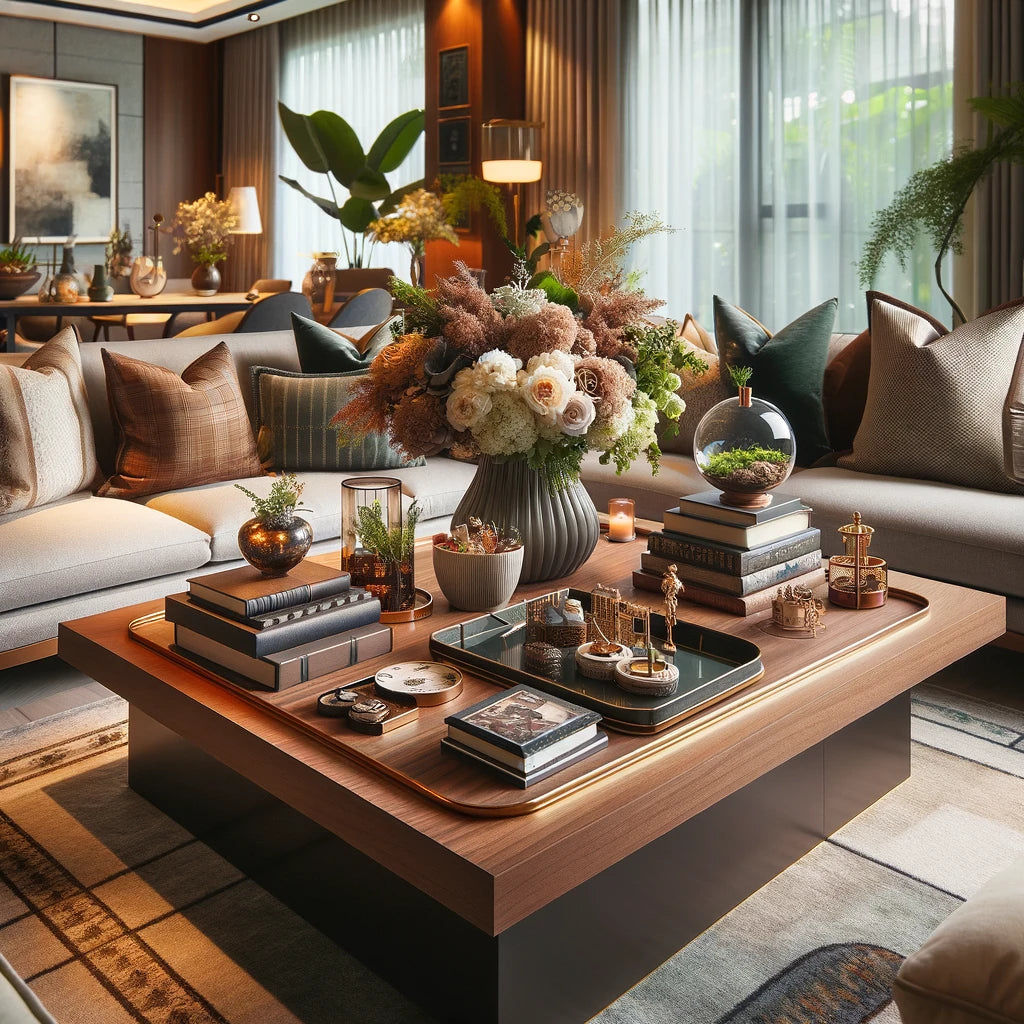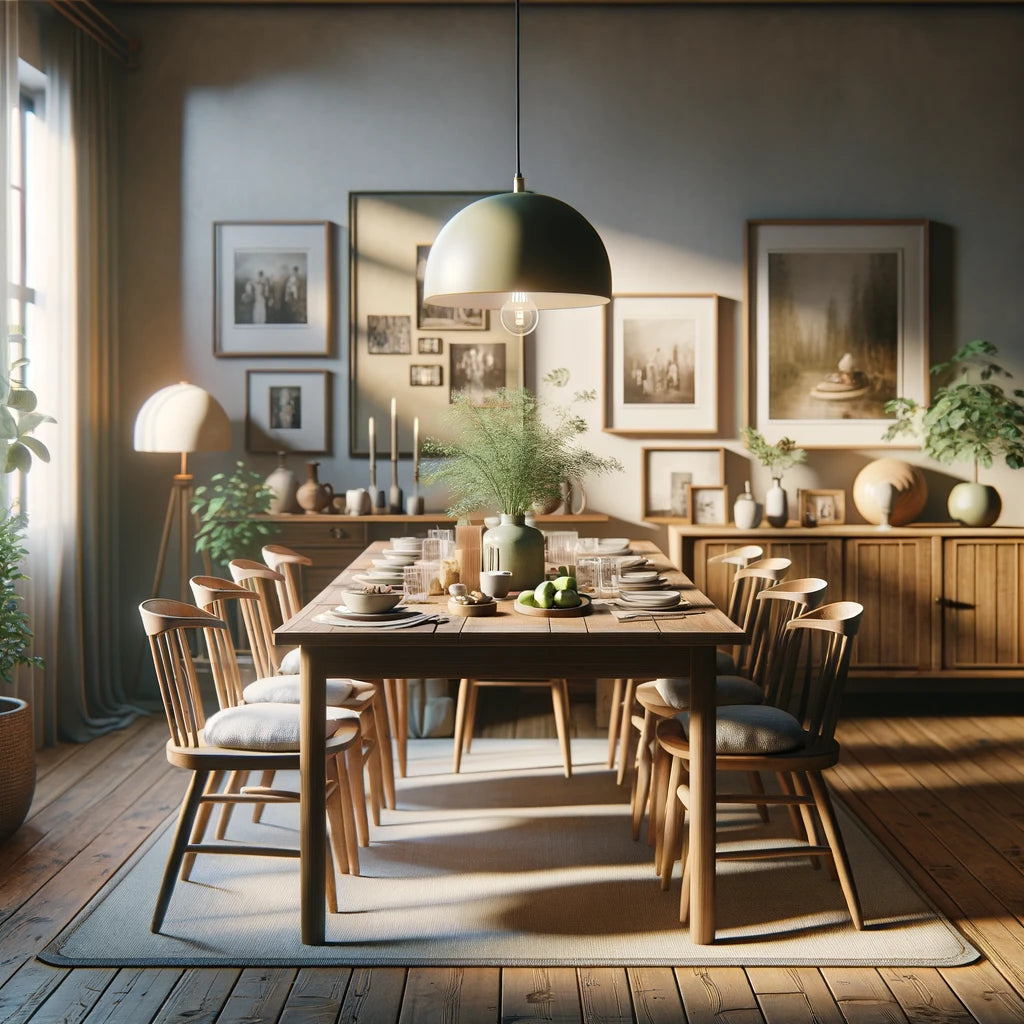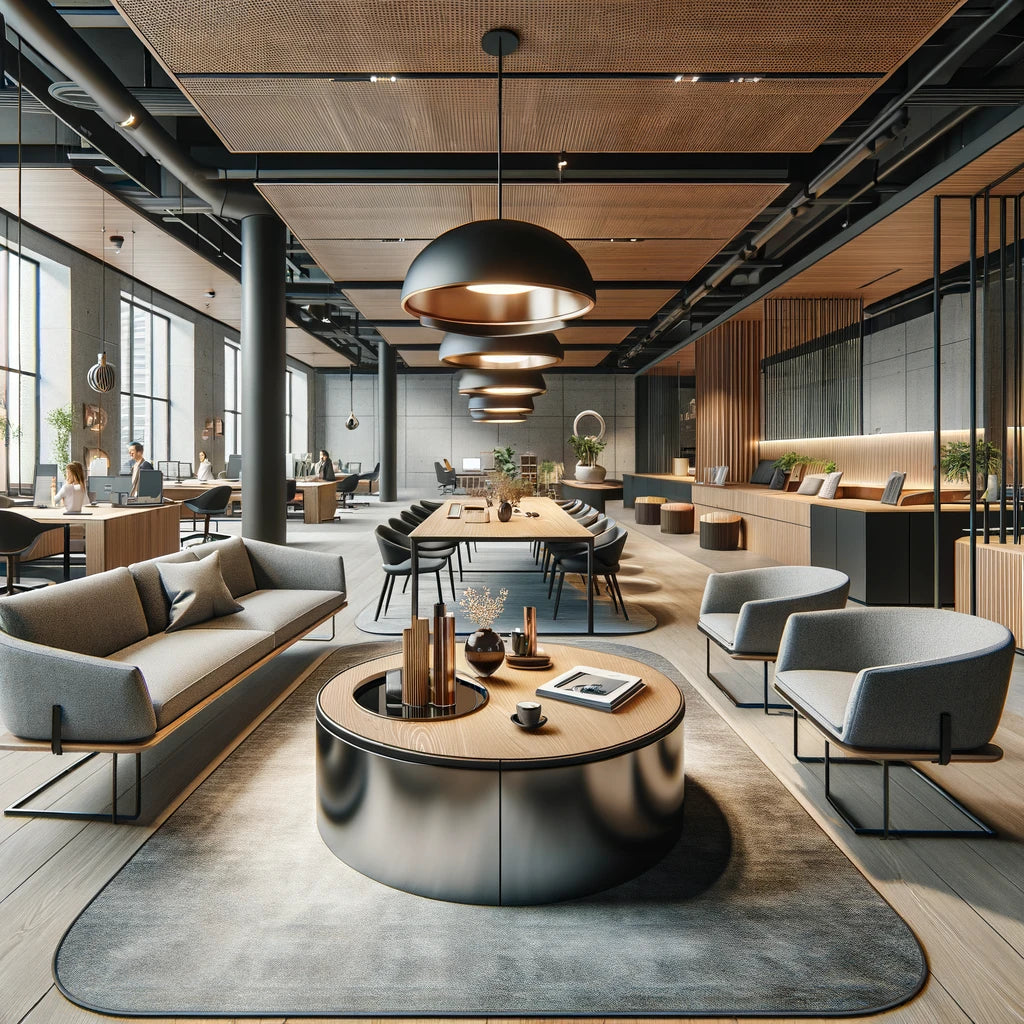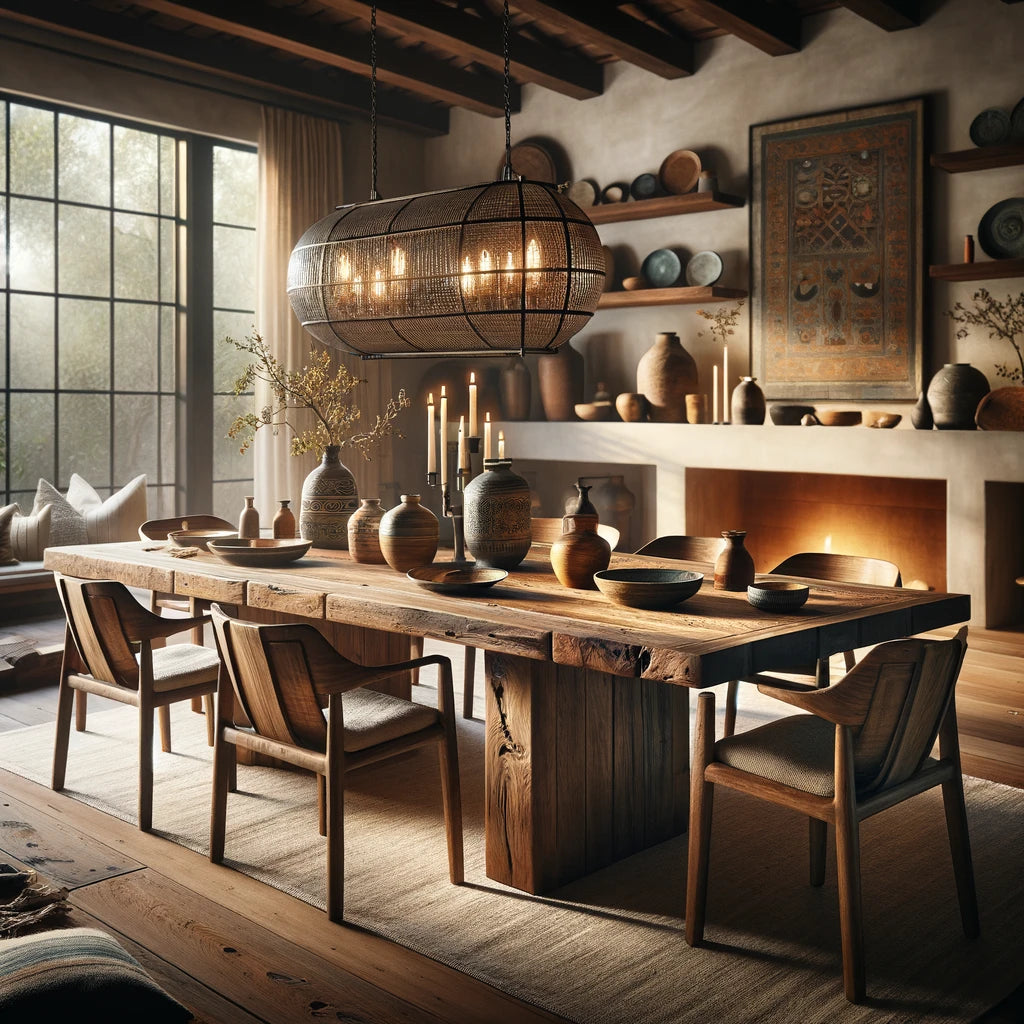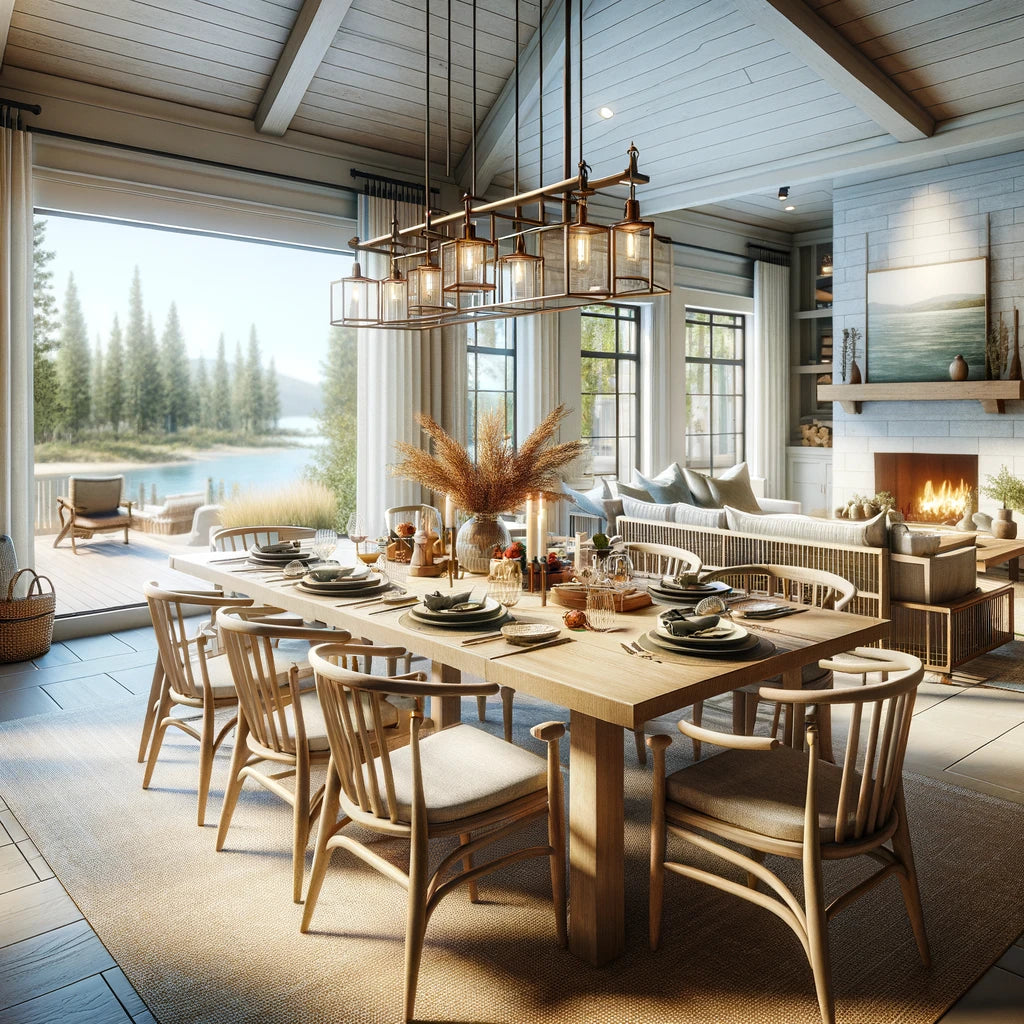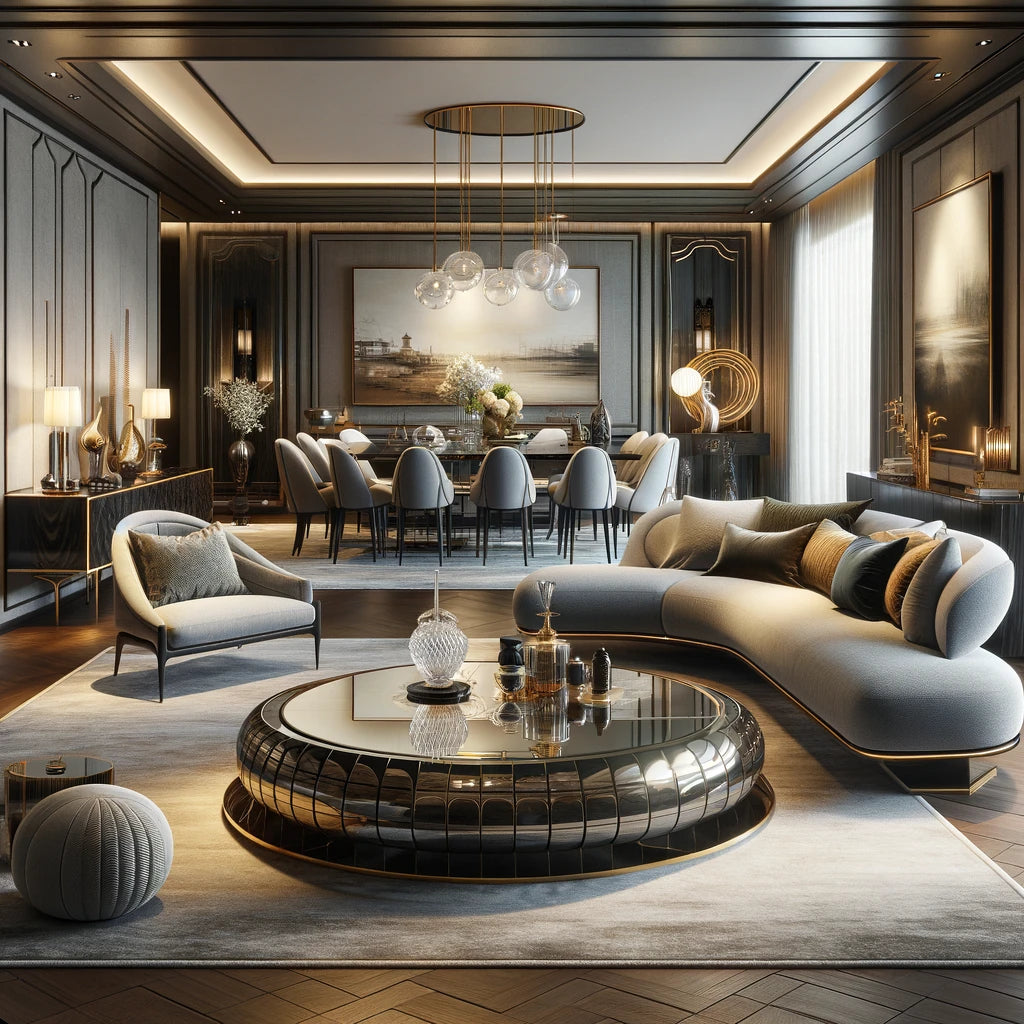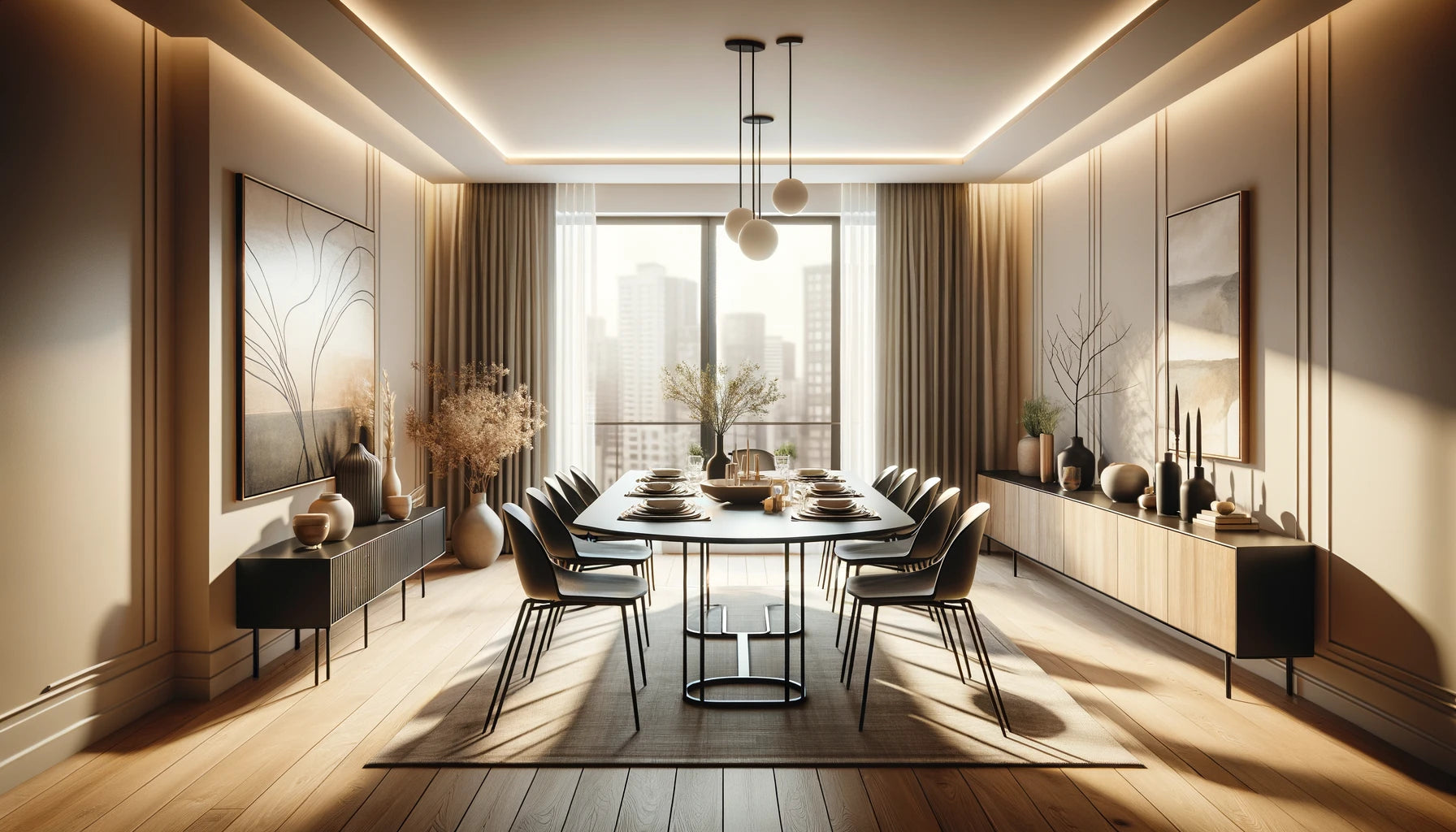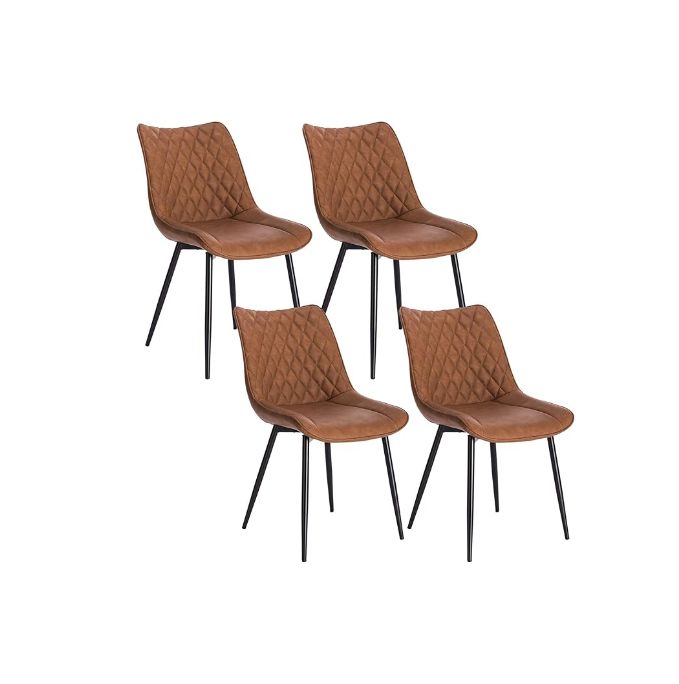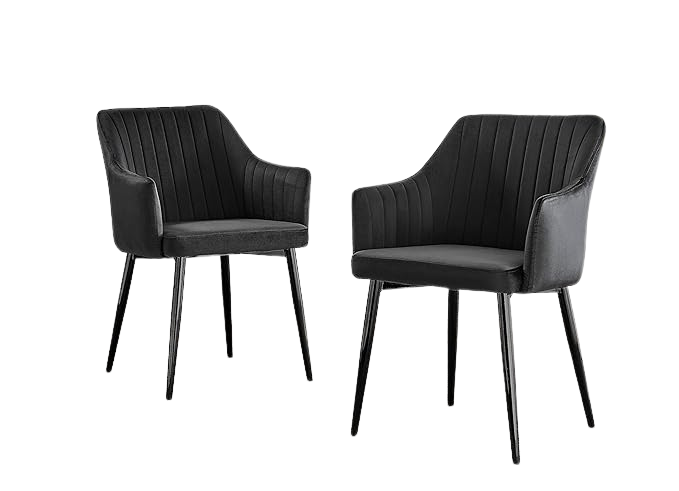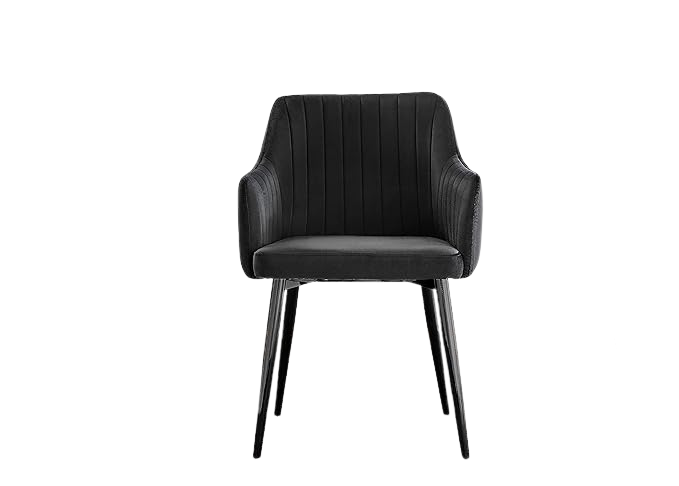Creating a captivating and functional coffee table arrangement is both an art and a science.
It's not just about placing random objects on a surface; it's about carefully selecting and arranging items that enhance the aesthetic appeal, functionality, and overall ambiance of your living space.
In the journey to designing the perfect coffee table décor, one must consider various elements such as themes, personal touches, balance, and texture. This guide delves into the intricacies of accessorising your coffee table, offering insights into how to choose a theme, the importance of starting with a tray, the art of layering, and the vitality of incorporating greenery and florals.
Additionally, it explores the significance of decorative objects, the personal touch, maintaining balance and symmetry, playing with textures, being mindful of scale, and the refreshing practice of rotating and refreshing your décor. Each section provides detailed strategies and tips to help you curate a space that reflects your unique style and meets your practical needs, transforming your coffee table into a captivating focal point in your home.
Choose a Theme
Selecting a theme for accessorising your coffee table is a crucial step in achieving a harmonious and visually appealing room décor.
Let's dive deeper into this concept and explore how different themes can influence your coffee table accessory choices:
- Minimalist Theme:
- A minimalist theme promotes simplicity, clean lines, and a clutter-free environment. When accessorising your coffee table in this style, focus on a few carefully selected items that serve both functional and aesthetic purposes.
- Opt for neutral colour palettes and choose accessories that are functional, such as a stylish tray for organising remote controls or a sleek vase with a single elegant flower.
- Rustic Theme:
- Rustic décor embraces a cosy and natural atmosphere, often featuring weathered wood, earthy tones, and vintage elements. For a coffee table in this theme:
- Consider using reclaimed wood trays or coasters, and accessorise with items like woven baskets, antique books, or a ceramic jug filled with wildflowers.
- Modern Theme:
- Modern décor highlights clean lines, geometric shapes, and a minimalist approach to design. To maintain a modern vibe on your coffee table:
- Opt for accessories with sleek, metallic finishes, like chrome or brushed nickel. Use geometric sculptures or contemporary art books as statement pieces.
- Eclectic Theme:
- Eclectic style encourages mixing and matching various design elements and eras to create a unique and visually stimulating space. When working with an eclectic theme for your coffee table:
- Blend different textures, colours, and patterns. Combine items like a Moroccan-style tray, an assortment of decorative candles, and a stack of colourful books to add personality and diversity.
- Traditional Theme:
- A traditional theme typically showcases classic and timeless elements. To achieve a traditional look on your coffee table:
- Incorporate elegant accessories such as a crystal bowl filled with potpourri, antique figurines, or a classic table runner with intricate patterns.
- Coastal Theme:
- A coastal theme brings the tranquillity of the beach and sea into your home décor. For a coffee table in this style:
- Decorate with seashells, driftwood, beach-themed books, and a light colour palette to capture the essence of coastal living.
- Industrial Theme:
- Industrial décor often features raw materials, exposed metal, and utilitarian design. To maintain an industrial vibe on your coffee table:
- Opt for accessories like metal trays, gears, or even vintage factory pieces to add an edgy and industrial touch.

Remember that the key to successful coffee table accessorising is balance and restraint.
While it's essential to adhere to your chosen theme, avoid overcrowding your table with too many items. Each accessory should have a purpose and contribute to the overall aesthetics and functionality of the space. Experiment with different arrangements, and don't be afraid to switch things up to keep your décor fresh and exciting.
Start with a Tray
Starting with a tray when accessorising your coffee table is a fundamental step that can greatly enhance the aesthetics and functionality of the space.
Here's an elaboration on this idea and some additional insights:
- Structural Organisation: A tray provides a structured foundation for arranging your coffee table items. Without a tray, objects might appear scattered or disorganised, whereas using a tray helps create a defined and purposeful arrangement. It also prevents smaller items from getting lost or overwhelmed by the table's surface.
- Size and Shape Considerations: It's important to select a tray that complements the size and shape of your coffee table. If you have a large table, a sizable tray can help fill the space and accommodate more accessories. Conversely, if your table is smaller, a compact tray will work better, leaving room for other functional purposes.
- Material Choices: The material of the tray should align with your overall theme or style. Here are some popular options:
- Wooden Trays: Wooden trays are a classic choice that adds warmth and a natural element to your décor. They work well in rustic, traditional, or bohemian settings.
- Mirrored Trays: Mirrored trays lend a touch of glamour and sophistication to your coffee table display. They are perfect for modern or glam interiors and can also create an illusion of more space in smaller rooms.
- Metallic Trays: Metal trays, such as those made of brass or stainless steel, can bring an industrial or contemporary flair to your table. They are durable and easy to clean, making them a practical choice.
- Colour Coordination: Pay attention to the colour of your tray and how it fits into your room's colour scheme. A well-chosen tray can tie together various colours and patterns in your décor, creating harmony within the space.
- Texture and Finish: Consider the texture and finish of the tray. Whether it's a glossy lacquered finish, a distressed look for rustic appeal, or a smooth and sleek texture, your choice should align with the tactile elements of your room's décor.
- Versatility: A tray is not only for decorative purposes but also functional. You can use it to serve drinks, snacks, or even hold remote controls and magazines. This dual-purpose nature makes it a versatile addition to your coffee table.
- Personalisation: You can personalise your coffee table tray with items that reflect your personality and interests. This can include decorative books, candles, vases, or small collectibles. The tray serves as a canvas for showcasing your unique style.

In summary, starting with a well-chosen tray when accessorising your coffee table is a practical and aesthetically pleasing approach.
It provides structure, complements your chosen theme, and allows for creative expression within your home décor. By paying attention to size, material, colour, texture, and function, you can ensure that your coffee table arrangement becomes a focal point of your living space, reflecting your personal style and enhancing the overall ambiance of the room.
Layering
Layering is a design technique that can transform your coffee table from a mundane surface into a visually captivating and functional centrepiece.
Let's delve deeper into the concept of layering and explore its benefits:
- Creating Depth and Visual Interest: Layering is all about adding depth and visual intrigue to your coffee table display. By stacking books, magazines, or other decorative objects, you introduce different levels and dimensions to the arrangement. This dynamic composition catches the eye and makes the table more appealing.
- Balance and Composition: When layering, it's essential to strike a balance between various elements. Mix and match different sizes, shapes, and textures to create a harmonious composition. For instance, you can place a large coffee table book horizontally as the base layer and then stack smaller books or objects vertically on top. This variation adds interest without overwhelming the space.
- Functional Use: Books and magazines not only contribute to the aesthetics but also serve a functional purpose. They offer guests something to peruse while enjoying a cup of coffee or waiting for a conversation to start. This makes your coffee table more inviting and engaging for visitors.
- Theme Reinforcement: The books and magazines you choose for layering can further reinforce your chosen theme or style. For example, if you have a minimalist or modern décor, select books with clean and sleek covers. In contrast, a rustic or eclectic theme might benefit from vintage or unique book selections.
- Colour Coordination: Pay attention to the colours of the books and magazines you incorporate into your layers. These can be an opportunity to introduce or reinforce your colour scheme. Consider arranging books with complementary or contrasting covers to add a pop of colour or maintain a cohesive palette.
- Texture and Material: Books and magazines come in various textures and materials. Hardcovers, softcovers, leather-bound books, or even magazines with different finishes can add tactile interest to your coffee table. Mixing and matching these textures can enhance the overall sensory experience of the space.
- Versatility: The layered elements on your coffee table are not static. You can easily swap out books or magazines to refresh the look, update seasonal décor, or accommodate different occasions. This versatility ensures that your coffee table remains a dynamic focal point in your living area.
- Personal Expression: The selection of books and magazines can also reflect your personal interests and tastes. Displaying books on topics you are passionate about or showcasing your favourite magazines can be a conversation starter and provide insights into your personality.

In conclusion, layering is a crucial technique in coffee table accessorising that offers numerous benefits.
It brings depth and visual interest to your arrangement, enhances the overall décor, and adds a functional aspect to your living space. By carefully considering the balance, theme, colour, texture, and versatility of the items you use for layering, you can create a coffee table display that not only looks appealing but also tells a story and engages your guests. It's a creative and versatile way to make your coffee table a stylish and welcoming centrepiece in your home.
Greenery and Florals
Incorporating greenery and florals into your coffee table décor is a wonderful way to infuse freshness, vitality, and a touch of nature into your living space.
Let's explore this concept in greater detail and highlight the benefits of using plants and flowers as coffee table accessories:
- Biophilic Design: Introducing plants and flowers to your coffee table follows the principles of biophilic design, which emphasises our innate connection with nature. This connection can enhance well-being, reduce stress, and create a more inviting and harmonious environment in your home.
- Variety of Options: There's an abundance of options when it comes to selecting greenery or flowers. You can choose from potted plants like succulents, snake plants, or peace lilies, which require minimal maintenance. Alternatively, fresh-cut flowers in a vase can provide a seasonal and ever-changing display, allowing you to switch up your coffee table décor regularly.
- Pop of Colour: Greenery and flowers bring vibrant colours and textures into your living space. The choice of plant or flower type can influence the colour palette of your décor. For example, lush green leaves can add a calming and refreshing effect, while vibrant flowers can provide bold and eye-catching accents.
- Natural Ambiance: The presence of live plants creates a calming and soothing ambiance. The gentle rustling of leaves or the fragrance of blooming flowers can enhance relaxation and elevate the overall atmosphere of the room.
- Balance and Proportion: When arranging greenery or flowers on your coffee table, consider the scale and proportion. The size of the plant or vase should harmonise with the table's dimensions and other decorative elements. A large, dramatic floral arrangement might be suitable for a spacious table, while a small succulent can work wonders on a more compact surface.
- Maintenance and Care: Be mindful of the maintenance required for your chosen greenery. Succulents and certain low-maintenance plants are ideal if you have a busy lifestyle, as they need minimal attention. Fresh flowers, on the other hand, will require regular water changes and trimming to keep them looking their best.
- Seasonal Flexibility: One of the advantages of using fresh flowers is the opportunity to adapt your coffee table décor according to the seasons. You can choose spring blooms, summer wildflowers, or festive arrangements during the holidays to create a dynamic and ever-evolving display.
- Personal Expression: Your choice of plants or flowers can also reflect your personal style and preferences. Whether you prefer a minimalist aesthetic with a single succulent or an opulent display of exotic flowers, this element of your coffee table décor allows you to express your unique taste.
- Complementing Décor: Greenery and florals can complement other decorative elements on your coffee table. They can enhance the theme or style you've chosen, whether it's a rustic setting with wildflowers or a modern space with sleek potted plants.

In summary, incorporating greenery and florals into your coffee table décor brings nature's beauty and vitality indoors, enhancing the overall ambiance of your living space.
It provides an opportunity for creativity, personal expression, and seasonally inspired changes. Whether you opt for easy-care plants or fresh-cut flowers, this natural touch adds life and colour to your coffee table while promoting a sense of well-being and harmony in your home.
Decorative Objects
Decorative objects are essential elements in coffee table décor, and their thoughtful selection can greatly enhance the visual appeal and personality of your living space.
Here's a more in-depth exploration of incorporating decorative objects into your coffee table arrangement:
- Theme Integration: Decorative objects should seamlessly integrate with the theme or style you've chosen for your room. Whether you're aiming for a minimalist, rustic, modern, or eclectic look, these objects play a crucial role in reinforcing and defining the aesthetic you want to achieve.
- Symbolism and Meaning: When choosing decorative objects, consider their symbolism and meaning. Select items that hold personal significance or evoke certain emotions. These objects can become conversation starters and add a layer of depth and personality to your décor.
- Material and Texture: The material and texture of decorative objects can greatly impact the overall look and feel of your coffee table display. Here are a few examples:
- Sculptures: Sculptures crafted from wood, metal, glass, or stone can introduce different textures and materials to your décor. For instance, a smooth glass sculpture can add a touch of elegance, while a wooden carving can bring warmth and a rustic vibe.
- Figurines: Figurines can be made from various materials, from porcelain to ceramic. Their finish and detailing can vary, allowing you to choose pieces that align with your desired aesthetic.
- Candles: Candles come in a wide range of shapes, sizes, and materials. Not only do they contribute to the visual appeal with their colours and textures, but they can also create a cosy and inviting atmosphere when lit.
- Art Pieces: Unique art pieces or small framed artworks can be excellent choices for coffee table décor. They can be a reflection of your taste in art and add a distinctive focal point to the table.
- Balance and Placement: Achieving the right balance is crucial when incorporating decorative objects. Avoid overcrowding the table, as it can create a cluttered and overwhelming look. Instead, select a few key pieces and arrange them strategically. Consider using varying heights, shapes, and sizes to create an interesting composition.
- Functional Elements: Some decorative objects can serve a dual purpose by being both visually appealing and functional. For example, decorative boxes can store small items like coasters or remote controls, combining form and function seamlessly.
- Seasonal and Occasional Changes: Decorative objects provide an opportunity to introduce seasonal or holiday-themed elements to your coffee table. Swap out items for festive décor during holidays or special occasions to keep your space fresh and engaging.
- Colour Palette: Consider the colour palette of your decorative objects and how it fits into your overall décor. They can either harmonise with existing colours or introduce contrasting shades to create visual interest.
- Personalisation: Your choice of decorative objects should reflect your personality and interests. These pieces can be a reflection of your hobbies, travels, or sentimental items that hold cherished memories.
- Conversation Starters: Unique or intriguing decorative objects can serve as excellent conversation starters when you have guests over. They can spark curiosity and provide an opportunity for storytelling and connection.

In conclusion, decorative objects are pivotal in creating a well-balanced and visually pleasing coffee table display.
Their careful selection, based on theme integration, symbolism, material, and placement, can elevate your décor to another level. Remember that less is often more; a curated collection of meaningful items can make a more significant impact than an overcrowded table. By investing thought and creativity into your choice of decorative objects, you can craft a coffee table arrangement that not only complements your room's style but also adds depth, character, and personal flair to your living space.
Personal Touch
Incorporating a personal touch into your coffee table décor is a wonderful way to infuse your living space with your individuality, memories, and a sense of warmth.
Here's an in-depth exploration of how personal items can enhance your coffee table display:
- Sentimental Value: Personal items hold sentimental value and often carry emotional significance. These could be mementos from your life's experiences, such as souvenirs from travels, gifts from loved ones, or items passed down through generations. When displayed on your coffee table, they become daily reminders of cherished memories and connections.
- Storytelling: Personal items have stories behind them. They can serve as conversation starters and provide an opportunity to share anecdotes and experiences with friends and family. Sharing the story behind each item creates a more meaningful and engaging atmosphere when you have guests over.
- Multigenerational Connection: Heirlooms and family keepsakes can connect you to your heritage and ancestors. Displaying these items on your coffee table not only honours your family's history but also keeps those connections alive in your daily life.
- Photo Displays: Framed family photos or pictures from your travels can add a personal and intimate touch to your coffee table. These images capture moments in time and the people and places that are important to you. They also provide a glimpse into your life and personal history.
- Style Integration: To seamlessly integrate personal items into your coffee table décor, consider their style and how they complement the overall theme of the room. If you have a modern décor, you can choose sleek frames for photos or contemporary travel souvenirs. For a more rustic setting, antique heirlooms or vintage items might be a better fit.
- Mixing with Decorative Objects: Personal items can be mixed with other decorative objects to create a harmonious and balanced arrangement. For example, you can pair a family photo with a stylish vase of flowers or a decorative tray. This combination allows you to showcase your personality while maintaining a cohesive look.
- Updating and Rotating: Coffee tables provide a versatile platform for displaying personal items. You can change and rotate the displayed items to reflect different seasons, occasions, or evolving interests. This keeps your coffee table décor fresh and dynamic.
- Sentimental Artefacts: Personal touches on your coffee table don't have to be limited to photos or mementos. They can also include artefacts such as an antique pocket watch, a piece of jewellery, or an old handwritten letter. These items carry a sense of history and nostalgia that can add depth to your décor.
- Colour and Texture: Pay attention to the colour and texture of the personal items you choose. They should harmonise with the overall colour palette and tactile elements of your décor. You can use frames or display containers that align with your style and colour scheme.
- Focal Point: Personal items can serve as a focal point on your coffee table. Whether it's a family photo, a cherished piece of art, or a special souvenir, these items draw attention and invite people to engage with your décor on a more personal level.

In summary, adding a personal touch to your coffee table décor not only makes your living space unique but also infuses it with warmth and meaning.
These items, whether they are family heirlooms, travel souvenirs, or framed photos, tell the story of your life and create a connection between your past, present, and future. They contribute to the overall ambiance of your room and create a more inviting and personal atmosphere for you and your guests. By carefully curating and showcasing these items, your coffee table becomes a canvas for your life's journey and a reflection of your individuality.
Balance and Symmetry
Creating balance and symmetry in your coffee table décor is a fundamental design principle that can significantly enhance the overall visual appeal and harmony of your living space.
Let's delve deeper into the importance of achieving balance and symmetry, along with some strategies for effectively implementing this technique:
- Visual Harmony: Balance and symmetry are essential because they create a sense of visual harmony in your coffee table arrangement. When the elements on your table are well-proportioned and evenly distributed, it provides a feeling of order and completeness, making the space more inviting and aesthetically pleasing.
- Focal Point: Balancing your coffee table décor allows for a clear focal point. Whether you have a large decorative object, a stack of books, or a unique centrepiece, achieving balance ensures that your chosen focal point stands out without overwhelming the table or the room.
- Symmetry's Role: Symmetry involves mirroring or repeating elements on either side of a central axis. While perfect symmetry is a classic approach, achieving balance doesn't always require strict symmetry. You can opt for either symmetrical or asymmetrical balance, depending on your design preferences and the overall style of your room.
- Size and Proportion: Balance considers the size and proportion of each item on your coffee table. For example, if you have a sizable vase on one side, balance it with a smaller object or grouping of items on the other side. This ensures that the table looks visually balanced and avoids a top-heavy or cluttered appearance.
- Mixing Heights: Varying the heights of objects is an effective way to create balance. For instance, if you have a tall candlestick holder on one side, balance it with a shorter decorative element on the opposite side. This interplay of heights adds depth and dimension to your arrangement.
- Grouping Items: Grouping items in odd numbers (e.g., three or five) often creates a more pleasing and balanced composition than even numbers. When placing decorative objects, consider arranging them in clusters or groupings to maintain a sense of balance while adding visual interest.
- Texture and Material: Pay attention to the textures and materials of the objects you place on your coffee table. A mix of textures, such as smooth, glossy, and matte, can create a balanced contrast that adds depth to your décor.
- Colour Palette: Ensure that the colour palette of your coffee table décor is balanced as well. Colours should be distributed evenly across the table, preventing one side from dominating visually. This helps maintain a harmonious and cohesive look.
- Functional Considerations: While aesthetics are crucial, also consider the functionality of your coffee table. Leave space for practical items like coasters, trays, or storage solutions while maintaining a balanced arrangement.
- Personalisation: Achieving balance doesn't mean sacrificing personalisation. You can incorporate sentimental or unique items into your décor while still adhering to the principles of balance. These personal touches can become focal points and contribute to the overall sense of equilibrium.

In summary, balance and symmetry are vital elements in creating a well-composed coffee table display.
They contribute to the overall visual appeal, create focal points, and ensure that your décor complements the room's style. By carefully considering the size, proportion, height, texture, and colour of the items you choose to display, you can achieve a harmonious and aesthetically pleasing coffee table arrangement that enhances the ambiance of your living space. Whether you prefer a formal and symmetrical look or a more relaxed and asymmetrical style, balance remains a fundamental principle of successful coffee table décor.
Play with Textures
Playing with textures is a design strategy that can elevate your coffee table décor, adding layers of visual and tactile interest to your living space.
Here's an in-depth exploration of how incorporating textures can enhance your coffee table arrangement:
- Depth and Dimension: Incorporating various textures creates depth and dimension in your coffee table décor. Smooth, rough, shiny, or soft surfaces interact with light and shadows differently, adding visual intrigue and making your arrangement more dynamic.
- Tactile Appeal: Texture engages the sense of touch, making your coffee table more inviting and interactive. Guests will be naturally drawn to touch and explore the different textures, fostering a more intimate and sensory experience in your living room.
- Contrast and Balance: Textures can be used to create contrast and balance within your coffee table display. For instance, pairing a rough, textured decorative tray liner with smooth, glossy ceramic vases creates a striking juxtaposition that draws attention and maintains visual balance.
- Variety of Materials: Textures can be introduced through a variety of materials. Consider items such as:
- Textured Coasters: Coasters with unique textures, like embossed patterns or natural materials such as cork or stone, not only protect your coffee table but also add an interesting tactile element.
- Decorative Tray Liner: A plush or textured tray liner can add a layer of cosiness and warmth to your coffee table décor. It also provides a soft contrast to hard objects like glass or metal.
- Tactile Fabric Runner: Placing a fabric runner or cloth on your coffee table introduces softness and texture. The choice of fabric, whether it's linen, burlap, or velvet, can influence the overall style and mood of your arrangement.
- Rugs or Mats: If your coffee table is set on a larger area rug, the rug's texture can be considered as part of the coffee table décor. The texture of the rug can harmonise or contrast with the textures on the table, creating a unified look.
- Colour and Texture Integration: When selecting textured items, consider how their colours interact with your coffee table's overall colour scheme. A textured element with a complementary or contrasting colour can add visual interest while enhancing the tactile experience.
- Seasonal Flexibility: Texture is a versatile design element that can adapt to different seasons and occasions. You can easily switch out textured elements like fabric runners or decorative mats to reflect seasonal changes or special holidays, keeping your coffee table décor fresh and relevant.
- Balance with Other Elements: When incorporating textures, maintain balance with other coffee table elements, such as decorative objects or greenery. The textures should complement and enhance the overall composition rather than overwhelm it.
- Personal Expression: Your choice of textures can also be a reflection of your personal style and preferences. Whether you opt for a natural, rustic texture or a more luxurious, velvety touch, your selection can convey your design sensibilities.

In summary, playing with textures is a versatile and impactful way to enhance your coffee table décor. It adds depth, tactile appeal, and visual interest to your living space.
The careful selection of textured elements, whether through coasters, tray liners, fabric runners, or other materials, allows you to create a coffee table arrangement that engages the senses, reflects your personal style, and contributes to the overall ambiance of your room. By considering how textures interact with other design elements, you can achieve a well-balanced and visually appealing coffee table display.
Be Mindful of Scale
Being mindful of scale is a crucial aspect of creating a well-balanced and visually pleasing coffee table décor.
The scale of your coffee table and its accessories plays a significant role in achieving a harmonious arrangement. Here's an in-depth look at the importance of scale and how to ensure that your coffee table décor maintains proportion and balance:
- Proportion and Harmony: Properly scaled accessories contribute to the overall proportion and harmony of your coffee table décor. When items are proportionate to the table's size, they fit seamlessly into the composition, creating a sense of cohesion and balance.
- Avoiding Overwhelm: Overly large accessories can overwhelm a coffee table, making it appear cluttered and uninviting. Conversely, items that are too small might get lost on the table's surface and fail to make an impact. By selecting accessories that are appropriately sized, you can avoid both extremes and maintain a visually pleasing arrangement.
- Coffee Table Size: Start by considering the dimensions of your coffee table. If you have a large table, you have the flexibility to use larger accessories or groupings of items without overcrowding the space. Smaller coffee tables require more restraint, as they have limited surface area for décor.
- Centrepiece Scale: If you choose to have a centrepiece or focal point on your coffee table, such as a vase of flowers, sculpture, or decorative bowl, ensure that its scale is proportionate to the table's size. A small vase on a large table can appear insignificant, while an oversized centrepiece can dominate the entire space.
- Balancing Sises: Balance is key when selecting accessories. If you have a substantial decorative item on one side of the table, balance it with a grouping of smaller items or an arrangement of varied heights on the opposite side. This creates a sense of equilibrium and ensures that the table doesn't look lopsided.
- Practicality: While aesthetics are important, also consider the practicality of the accessories in relation to the table's size. Ensure there is enough space left for functional items like coasters, remote controls, or the placement of drinks and snacks. These practical elements should complement rather than disrupt the overall décor.
- Grouping Objects: Grouping smaller objects together can create the illusion of a larger, more substantial arrangement. For instance, a cluster of smaller decorative items can have a more significant visual impact than individual pieces scattered across the table.
- Consider the Room: Take into account the overall size and layout of the room when choosing coffee table décor. The scale of your coffee table and its accessories should be in harmony with the surrounding furniture and the available space.
- Personal Style: Your personal style and preferences also play a role in determining the scale of your coffee table accessories. Whether you prefer a minimalist, contemporary look or a more eclectic, layered style, selecting items that align with your design sensibilities ensures that the décor feels authentic and reflects your taste.

In conclusion, being mindful of scale is a fundamental aspect of successful coffee table décor.
It contributes to the overall proportion and harmony of your arrangement, ensuring that the items you choose are neither too large nor too small for the table's size. By carefully selecting accessories that are proportionate to your coffee table and considering the room's layout, you can achieve a balanced and visually appealing coffee table display that enhances the overall ambiance of your living space.
Rotate and Refresh
Rotating and refreshing your coffee table accessories is a dynamic and creative approach to maintaining a visually stimulating and ever-evolving living space.
Here's a closer look at why and how to embrace this practice:
- Dynamic Aesthetics: Periodically changing your coffee table accessories infuses your living space with dynamic aesthetics. It prevents your décor from becoming stagnant and keeps your home feeling lively and engaging. This adaptability allows you to experiment with different styles, colours, and textures over time.
- Seasonal Transitions: Rotating accessories with the seasons is a practical way to keep your décor relevant and seasonally appropriate. For example, you can introduce springtime flowers or pastel-coloured accents during the spring and summer months, followed by warm and cosy elements like candles and blankets in the fall and winter.
- Reflecting Your Tastes: Your design preferences and tastes may evolve over time. Rotating coffee table accessories allows you to reflect these changes in your décor. Whether you develop a newfound love for a particular colour, style, or theme, or simply want to experiment with different looks, regularly updating your coffee table lets you align your décor with your evolving tastes.
- Preservation: Some decorative items, such as fresh flowers or seasonal décor, have a limited lifespan. By rotating them, you can ensure that your coffee table always looks its best. Replacing items when they start to show wear or age helps maintain the overall quality of your décor.
- Embracing Trends: Staying up-to-date with current design trends can be exciting. Rotating accessories gives you the opportunity to experiment with trendy elements and incorporate them into your décor without making permanent changes to your space.
- Creative Expression: Refreshing your coffee table décor is an act of creative expression. It allows you to curate a new narrative or story through your décor, whether it's inspired by a particular season, a recent travel experience, or a special event in your life.
- Mix and Match: When you rotate accessories, you can also mix and match different elements. Try combining items from various seasons or styles to create unique and eclectic arrangements. This eclectic approach adds a layer of interest and personality to your décor.
- Minimal Effort: Refreshing your coffee table décor is a relatively low-effort way to update your living space. Unlike major furniture or décor overhauls, it only requires a few small changes, making it accessible and manageable even for those with busy schedules.
- Emotional Connection: The process of selecting and arranging new accessories can be emotionally rewarding. It allows you to reconnect with your space, reminisce about past seasons or experiences, and infuse your décor with sentimental value.
- Customisation: Rotating and refreshing your coffee table décor provides an opportunity for customisation. Tailor your selections to special occasions, holidays, or personal milestones, adding a layer of meaning and connection to your living space.

In conclusion, rotating and refreshing your coffee table accessories is an enjoyable and practical practice that keeps your living space vibrant and adaptable.
It allows you to embrace seasonal transitions, reflect your evolving tastes, experiment with trends, and inject new life into your décor effortlessly. By regularly updating your coffee table, you can ensure that it remains a dynamic and ever-changing focal point in your home, providing you with endless opportunities for creative expression and personalisation.
Conclusion
Accessorising your coffee table is more than just a decorative task; it's an opportunity to infuse your living space with personality, style, and functionality.
From selecting a theme that resonates with your aesthetic preferences to incorporating personal touches that tell your story, every element contributes to the overall ambiance of your room. By embracing the principles of balance and symmetry, experimenting with textures, and being mindful of scale, you can create a harmonious and visually appealing arrangement. Furthermore, the practice of rotating and refreshing your coffee table accessories ensures that your décor remains dynamic and adaptable, reflecting the ever-evolving nature of your tastes and the seasons. Whether you're drawn to minimalist elegance, rustic charm, or eclectic vibrancy, this guide offers a comprehensive approach to coffee table accessorising, empowering you to craft a space that is not only beautiful but also a true reflection of your individuality and lifestyle.

